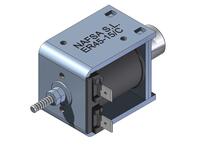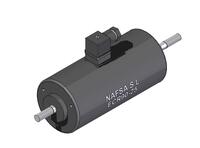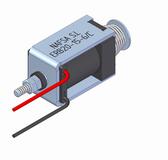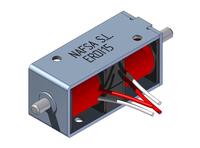Solenoid – a word associated with many devices and products, is used widely in industrial automation. A solenoid is essentially a coil of wire which you use to run a current through to create an electromagnet, which in turn then moves a plunger (or shaft), creating the linear motion. Anywhere that electrical power is required to achieve a rapid end to end movement over a short distance becomes an application for a solenoid.
In this article, we focus on the types of linear solenoids and their uses.
A linear solenoid is a device that converts an electromagnetic force into a linear movement.
A linear solenoid produces the linear movement, called the ‘stroke’, through voltage being applied through a coil. The stroke goes from the start to finish position in one movement and is usually measured in millimetres.
By varying the electrical winding in the solenoid, we can produce many options for different requirements on duty and force.
The same unit can be manufactured for high force with minimal duty (on time) or a lower force for longer duties where it is to be used for long periods of time.
The force a solenoid produces through the movement is generally provided by an applied voltage. However, the solenoid design and function can be applied in many ways.
NAFSA S.L. has a long experience in the design, manufacture and sale of all kind of industrial electromagnets, holding electromagnets, spring or external return solenoids, latching and two-way linear solenoids and electromagnetic bolts.
The four types of linear solenoids are simple linear solenoids, reversible/two-way linear solenoids, bistable or latching solenoids and bistable reversible linear solenoids.
With a simple linear solenoid, the stroke is generated from voltage applied to a coil, thus generating an electromagnetic field, and moving the stroke from start to finish.
When the voltage is removed, an external force or internal mechanical spring returns the solenoid to the start position.
Usable force is only available when the solenoid is under voltage, in one direction only.
Using the same principles as the simple linear solenoid, a reversible or two-way linear solenoid has a second coil to return the solenoid to a start position.
This allows usable force to be applied equally in both directions and doesn’t require external forces or springs to return.
When voltage is removed from both coils, the solenoid is free to move in either direction.
Like the simple linear solenoid, bistable or latching solenoids provide movement and usable force when a coil is under voltage.
This finished position is then held by a magnet, which can hold when power is removed to the coil.
The return to start position is initiated by an inversed pulsed voltage applied to the coil, along with external forces or a mechanical spring within the solenoid.
The main feature of bistable and latching solenoids is their ability to hold a position at either the start or finish position without voltage.
Like the reversible solenoid, the bistable reversible linear solenoid provides equal force in both directions.
It also features permanent magnets to hold the start or finish position with power off, giving extra security over a regular reversible solenoid where needed.
Blog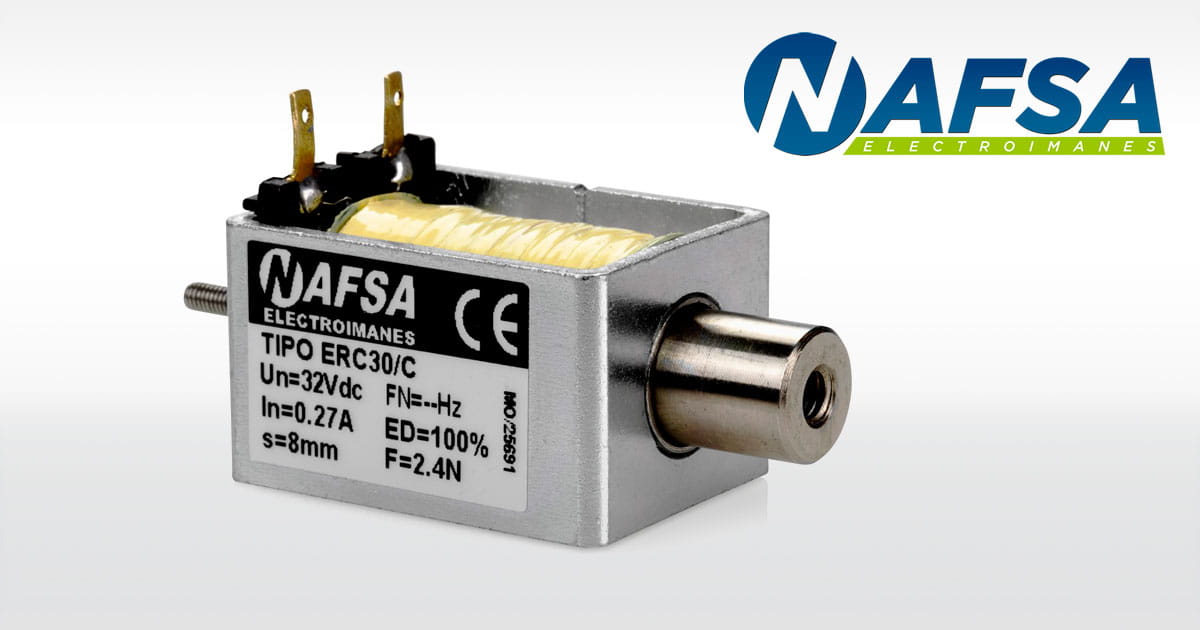
Industries that may use linear solenoids include the automotive, railway, medical industry and many more.
Some of the primary uses of a linear solenoid can be for the following:
You can find NAFSAs’ range of linear solenoids on our website.
To find the suitable solenoid for your application, email [email protected] and they will happily assist you with technical expertise and advice.
